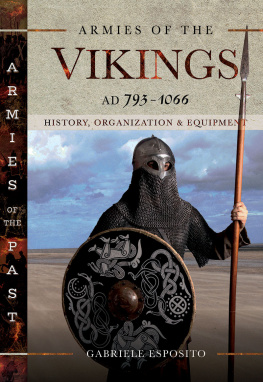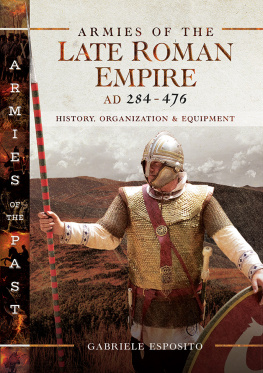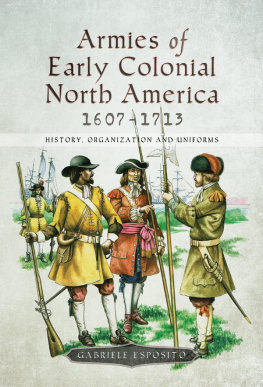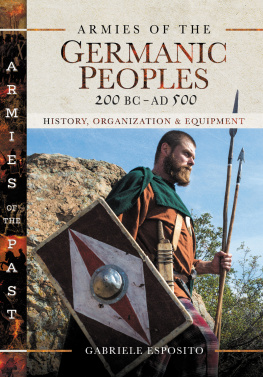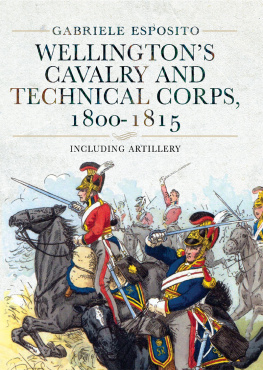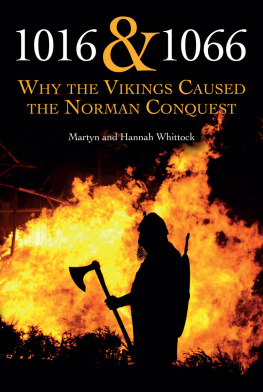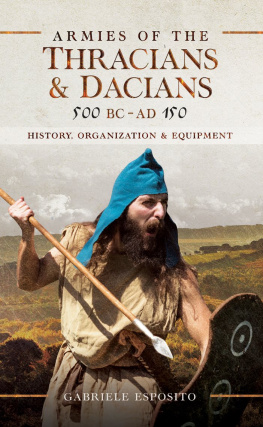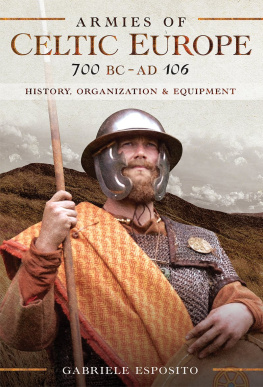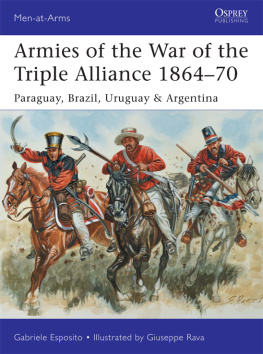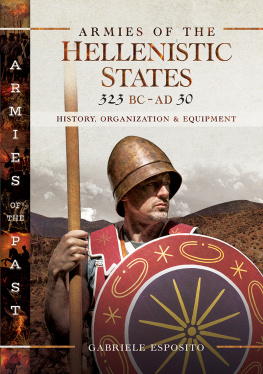Armies of the Vikings, AD 7931066
Armies of the Vikings, AD 7931066
History, Organization and Equipment
Gabriele Esposito
First published in Great Britain in 2021
by Pen & Sword Military
An imprint of Pen & Sword Books Limited
47 Church Street
Barnsley
South Yorkshire
S70 2AS
Copyright Gabriele Esposito 2021
ISBN 978 1 39900 839 6
ePUB ISBN 978 1 39900 840 2
Mobi ISBN 978 1 39900 840 2
The right of Gabriele Esposito to be identified as Author of this Work has been asserted by him in accordance with the Copyright, Designs and Patents Act 1988.
A CIP catalogue record for this book is available from the British Library
All rights reserved. No part of this book may be reproduced or transmitted in any form or by any means, electronic or mechanical including photocopying, recording or by any information storage and retrieval system, without permission from the Publisher in writing.
Pen & Sword Books Limited incorporates the imprints of Atlas, Archaeology, Aviation, Discovery, Family History, Fiction, History, Maritime, Military, Military Classics, Politics, Select, Transport, True Crime, Air World, Frontline Publishing, Leo Cooper, Remember When, Seaforth Publishing, The Praetorian Press, Wharncliffe Local History, Wharncliffe Transport, Wharncliffe True Crime and White Owl.
For a complete list of Pen & Sword titles please contact
PEN & SWORD BOOKS LIMITED
47 Church Street, Barnsley, South Yorkshire, S70 2AS, England
E-mail:
Website: www.pen-and-sword.co.uk
Gabriele Esposito is a military historian who works as a freelance author and researcher for some of the most important publishing houses in the military history sector. In particular, he is an expert specializing in uniformology: his interests and expertise range from the ancient civilizations to modern post-colonial conflicts. During recent years he has conducted and published several researches on the military history of the Latin American countries, with special attention on the War of the Triple Alliance and the War of the Pacific. He is among the leading experts on the military history of the Italian Wars of Unification and the Spanish Carlist Wars. His books and essays are published on a regular basis by Osprey Publishing, Winged Hussar Publishing and Libreria Editrice Goriziana; he is also the author of numerous military history articles appearing in specialized magazines like Ancient Warfare Magazine, Medieval Warfare Magazine, Classic Arms & Militaria Magazine, History of War, Guerres et Histoire, Focus Storia and Focus Storia Wars .
Acknowledgements
T his book is dedicated to my magnificent parents, Maria Rosaria and Benedetto, for the immense love and fundamental support that they always give me. It is thanks to their precious advice over many years that the present book has been much improved. Very special thanks goes to Philip Sidnell, the commissioning editor of my books for Pen & Sword: his love for history and his passion for publishing are the key factors behind the success of our publications. Many thanks also to the production manager of this title, Matt Jones, for his excellent work and great enthusiasm. A special acknowledgement goes to Tony Walton, for the editing of this book with his usual passion and competence, as well as for honouring me with his sincere friendship. A very special mention goes to the brilliant re-enactment groups that collaborated with their photos to the creation of this book: without the incredible work of research of their members, the final result of this publication would have not been the same. As a result, I want to express my deep gratitude to the following living history associations: Jomsborg Vikings Hird from Poland, Brokkar Lag from Spain, Sjrvaldar Vikings from the United States of America and Confraternita del Leone/Historia Viva from Italy.
Introduction
T he Vikings are without doubt one of the most iconic peoples of the Middle Ages. Their ferocious raids and rapid incursions were a major part of European history for almost three centuries, and they are still remembered today as one of the most characteristic elements of the time. It should be noted, however, that the Vikings were much more than simple raiders who terrorized most of medieval Europe: they were a people of navigators and explorers with incredible skills, who crossed the oceans and navigated the rivers of the northern hemisphere in search of new lands to settle and live in prosperity. Viking expansionism and migrations involved large portions of the known world in the central centuries of the Middle Ages. Moving from their homeland in southern Scandinavia, the Vikings first settled in the British Isles before advancing further west. They reached Iceland and Greenland after crossing the Atlantic Ocean, populating islands that had never before been visited by any European. From their new outposts, the Scandinavian explorers were able to move even further west, reaching the coastline of present-day Canada and establishing a short-lived settlement in North America that was known as Vinland. The Vikings were consequently the first Europeans to live in the Americas and the first navigators to understand the great extent of the Atlantic Ocean (which had always been considered as the edge of the world by most ancient civilizations).
The Viking presence in Britain and Ireland was characterized by continuous conflicts with the local populations, who saw the Scandinavian newcomers as deadly rivals. In Britain, after decades of incessant fights against the Saxons, the Vikings created their own short-lived domain known as the Danelaw. In Ireland, however, they were utterly defeated by the local Celtic communities after having obtained control over large portions of the island. To the east of Scotland, the Vikings were able to establish a long-lasting realm that was known as the Kingdom of the Isles, which comprised the Hebrides, the Isle of Man and the islands of the Firth of Clyde. This realm continued to exist until the mid-thirteenth century and was a long-lasting presence on the political scene of the British Isles. It should be noted that, during the period taken into account in this book, the Vikings also exerted their control over the Orkney Islands and the Shetland Islands, to the point that their influence over these peripheral areas of Britain was a very significant one.
In Western Europe, the Scandinavian explorers and conquerors had several targets, most notably the territories of the former Frankish Empire. The latter had lost its territorial unity soon after the death of its founder, Charlemagne, and thus was an easy prey for the Vikings, who raided northern France very frequently and ravaged key regions of the country such as Normandy and Brittany. The newly born Kingdom of France was never able to counter them effectively, which resulted in the famous Viking siege of Paris. Eventually, in order to save the central region of their kingdom, the French monarchs had no choice but to cede Normandy to the Scandinavian pirates. In their new French homeland, the Vikings soon flourished, gradually transforming themselves into feudal aristocrats. However, they never lost their original spirit of conquest, and during the following decades moved from Normandy to conquer England and southern Italy. The warriors who triumphed at Hastings in 1066 and who conquered southern Italy during the early eleventh century, however, were very different from their Viking ancestors: they were not more sea-raiders armed with axes, they were feudal heavy knights with highly skilled training and discipline. Within a few decades, the Vikings of Normandy had transformed themselves and started to be known as Normans.


